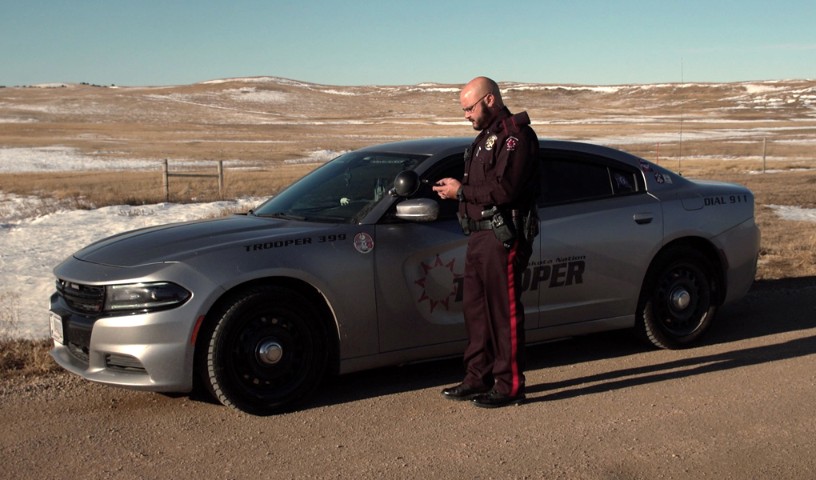A behind-the-scenes look at how new mission-driven solutions for FirstNet® came together
March 12, 2021

We recently announced the launch of 4 new mission-driven solutions exclusively available to all FirstNet subscribers: FirstNet® MegaRange™; Z-Axis; FirstNet Compact Rapid Deployables™; and Land-Mobile-Radio (LMR) interoperability for FirstNet Push-To-Talk (PTT).
This was the culmination of several years of great work behind the scenes to drive innovation in lifesaving, public safety technology. It involved a host of network architects, system engineers, project managers and partners to get it done. And it’s an example of what we can accomplish with great talent and leadership.
We have a job that’s focused on developing technology that matters – technology that can potentially help save lives. And when you have a job like that – that you truly enjoy – it’s no longer a job.
When we started working on this in 2017, we knew we had to create tools unique to public safety. In telecommunications, you typically create products and services for mass market. But not in the case of the FirstNet team at AT&T. We had and continue to have a unique vision. So, we started with pulling together the right team and finding and joining forces with niche vendors.
Taking risks, meeting challenges
As leaders driving this, we knew that we had to be willing to take on risk and change course several times. You plan, re-plan and then plan some more. There were times when we were saying we can’t solve this – things we expected to work in a certain manner didn’t. There were hurdles both technical and non-technical that needed to be overcome.
But through it all, we kept sight of the vision for what we knew public safety wanted and the capabilities they need. We had to be willing to be flexible; willing to change the plan. Adjust. When something didn’t work, we did a complete 180 and started over. Both persistence and flexibility were key in keeping these initiatives going.
Key players and technologies
An effort like this also required us to bring in subject matter experts from all across AT&T – from wireless and access technology, network engineering and operations, supply chain, product realization, and product marketing to name just a few. We often joke that “It takes a village” to launch a new capability. But you need to work with people who understand technology and the vision for public safety.
For example, for FirstNet® MegaRange™ the architects collaborated across RAN Architecture, Network Engineering, Device Architecture, as well as multiple partner engineering teams to verify that the capabilities performed as expected. The teams had to design, test, evaluate results, redesign, and retest numerous times over the years until the technology was optimized and ready for market launch.
FirstNet is the only network where public safety can take advantage of the highest power class signaling available in the U.S. with FirstNet® MegaRange™ – the high-power user equipment (HPUE) solution exclusively available on Band 14. And it’s built following 3GPP and FCC standards. For rural, remote and maritime first responders, MegaRange™ can significantly improve connectivity, especially at the edge of network coverage. For urban and suburban responders, it can help solve the common challenge of difficult coverage spots. The stronger signal may better assist those connecting from hard-to-reach places, such as building shadows, parking garages, basements, elevators, and stairwells.
For Z-Axis, we again partnered with our internal AT&T colleagues in product marketing, device architecture, product realization ,construction and access engineering and with our partner teams to architect, test, fine-tune and deploy the necessary network infrastructure across different markets. To expose the functionality for use by our portfolio of FirstNet devices, apps, and solutions, we worked closely with our technology and application development organization.
Imagine looking at a map and being able to know what street corner you’re standing on, as well as how high up in the building you are. And then, being able to know where and how high up in the building all your team members are.
That was the vision behind our Z-Axis capability. Think of it as the “vertical axis” view added to current two-dimension situational awareness applications. Intrepid Networks’ Response for FirstNet, a situational awareness platform, is the first to bring our Z-Axis capability to market.
Enabling LMR Interoperability for FirstNet Push-To-Talk required us to operate a large, geographically-dispersed, cross-functional team to design and deploy this capability. The inability to have face-to-face interactions during COVID-19, made it even more challenging. But with the right team members and experienced leadership, we were able to successfully launch the functionality. The first-ever nationwide mission-critical, standards-based PTT solution to launch in the U.S. now supports LMR-to-LTE interoperability. This means first responders using LMR can virtually seamlessly communicate with users on FirstNet PTT and vice versa.
With LMR interoperability, FirstNet PTT can complement agency communications – such as including support staff who regularly use smartphones and allowing team members who travel outside the LMR footprint to remain connected.
We have 11 FirstNet Ready® devices now approved for FirstNet PTT. You can read more about how this helps first responders work better together in our latest blog.
At the end of the day, what motivated everyone was knowing that we were providing a capability to public safety that is going to transform the way they protect our communities.
Suja John leads the Technology Organization for the FirstNet Program at AT&T. She is the Chief Architect of the Nationwide Public Safety Broadband Network. Her team is responsible for the architecture & planning of the FirstNet Network, design of Mission Critical services for public safety and defining the long-term strategy & evolution of the network. Suja holds a Bachelor of Science degree in Computer Science & Engineering from Bangalore University, India, and is the recipient of several excellence awards including the Women of Color STEM Technology Rising Star. Suja is currently based in Northern Virginia.
